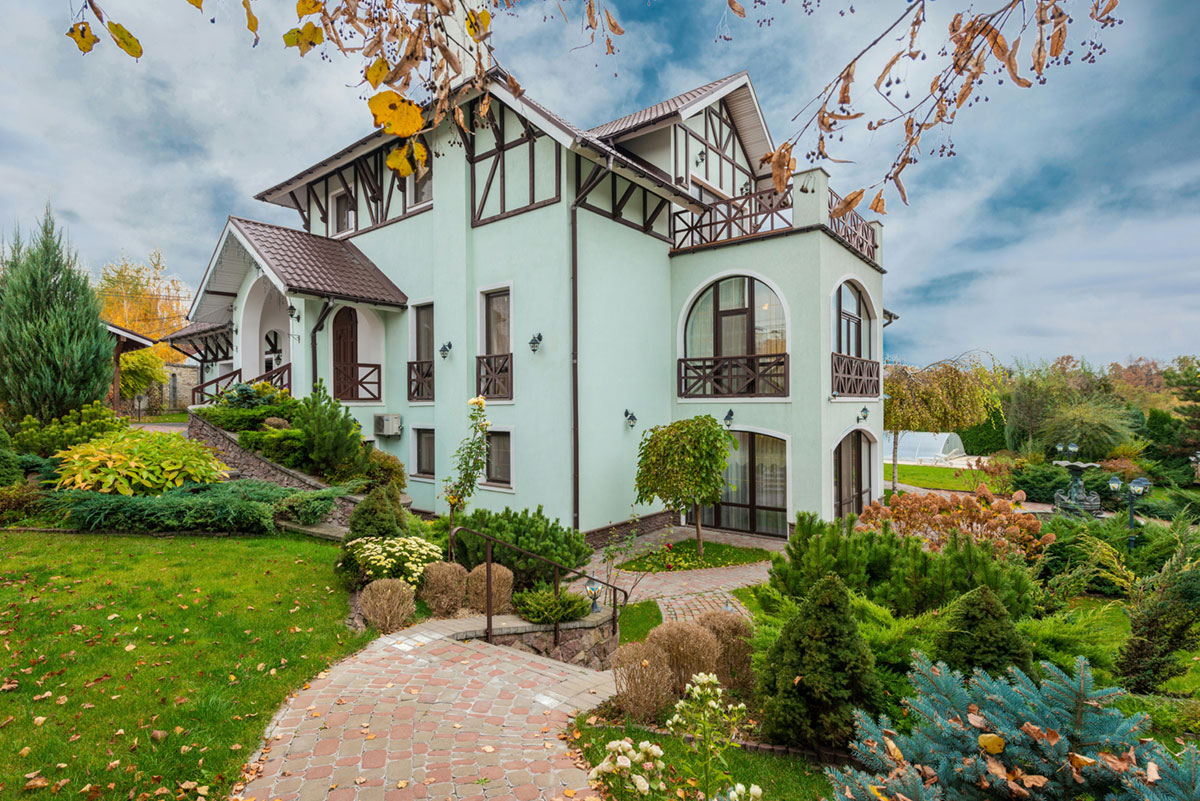Imagine stepping out your back door into a garden that feels like a natural extension of your home, where every flower bed, path, and plant speaks the same design language as your living room or kitchen. That’s the magic of a well-integrated home garden—one that feels like it has always been there, blending seamlessly with your home’s architecture and the surrounding landscape.
A garden doesn’t just happen; it evolves, reflecting the personality of its gardener and the character of the home it surrounds. It’s about striking that perfect balance between nature and nurture, structure and spontaneity.
Take a Walk on the Wild Side (or Not)
First, let’s think about your home’s style. Is it a charming cottage, a sleek modern build, or perhaps something in between? The garden should echo this. Picture a quaint cottage with climbing roses, lavender borders, and a gravel path winding its way to a hidden bench. Now, imagine the same scene against a stark, contemporary home—it doesn’t quite fit, does it?
For more modern homes, consider simplicity: think geometric shapes, minimalist planters, and native grasses swaying gently in the breeze. These elements create a sense of calm and order, mirroring the clean lines of the house itself. On the other hand, if your home leans more traditional, why not play with symmetry? Boxwood hedges, blooming perennials, and a welcoming brick path can create a garden that feels both timeless and inviting.
Plant with Purpose: Framing, Accenting, and Softening
Plants are the true storytellers of any garden. They can frame a view, soften a hard edge, or even direct the flow of traffic. Imagine tall, wispy grasses brushing against the side of your porch, giving it a relaxed, beachy vibe. Or perhaps a row of hydrangeas leading guests to your front door, each bloom a cheerful greeting.
And it’s not just about what you plant, but where. Use plants to draw attention to your home’s best features—a grand front door, a charming window, or a cozy patio. Even the simplest of plants, like hostas or ferns, can add a lush backdrop that lets your home’s architecture shine.
Create Your Garden “Rooms”
Now, let’s step into the idea of garden rooms. Picture this: an intimate seating area under a pergola, dappled sunlight filtering through, surrounded by pots overflowing with herbs and flowers. It’s a space where morning coffee becomes an event. A little farther on, there’s a vegetable patch—raised beds brimming with tomatoes, peppers, and basil. It’s not just a garden; it’s an experience, each section inviting you to pause, relax, and enjoy.
Breaking up the garden into different “rooms” not only adds variety but also makes the garden feel larger and more dynamic. Each space can have its own mood and function, from a sun-soaked dining area to a shaded reading nook.
Paths That Lead Somewhere Special
A garden path should always lead somewhere—be it a bench tucked away in a quiet corner, a bubbling fountain, or simply a beautiful view. And the materials? They matter. Imagine the soft crunch of gravel underfoot as you stroll toward a pergola, or the solid, timeless feel of a brick path winding through a rose garden.
Paths guide not just the feet but the eye. They can make a garden feel bigger, more inviting, and more mysterious, hinting at secrets around every bend.
Don’t Forget the Little Surprises
One of the most delightful aspects of gardening is its ability to surprise. Consider adding unexpected elements: a weathered garden statue peeking through the ferns, a cluster of colorful pots arranged like an impromptu art installation, or a rustic trellis where climbing roses and morning glories dance in tandem.
Even practical elements, like a rain barrel or compost bin, can be turned into charming features with a bit of creativity. Perhaps a vine-covered archway marks the entrance to your veggie garden, or a vintage wheelbarrow overflows with petunias.
Nature’s Palette: Playing with Color and Texture
And then there’s color. Think of your garden as a living, breathing extension of your home’s palette. If your home has warm, earthy tones, perhaps your garden bursts with marigolds, poppies, and dahlias. Or, if you favor cool, calming hues indoors, bring that serenity outside with blues, purples, and whites.
Textures, too, add layers of interest—feathery grasses, glossy leaves, rough bark. Together, they create a sensory experience that is as tactile as it is visual.
Let the Seasons Be Your Guide
Finally, remember that gardens are not static—they change with the seasons, and that’s part of their charm. Embrace this rhythm by planting for year-round interest: spring bulbs that burst with color, summer perennials that sway in the breeze, autumn grasses that catch the golden light, and evergreens that stand strong through winter’s chill.
Each season brings a new chapter, a new reason to love your garden even more.
Your garden is more than just an outdoor space; it’s an extension of your home and a reflection of you. By blending it thoughtfully with the style and landscape of your house, you’re not just creating a garden—you’re crafting a story, one that evolves and grows with each passing season. So go ahead, dig in, and let your creativity bloom.


